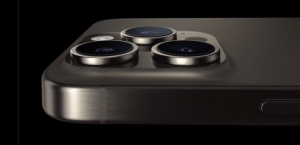It’s official folks, the iPhone 14 has been revealed. Pre-orders start at 5:30 pm India Time on September 8 and will go on sale on September 16.
But Apple’s iPhones have changed with the ‘vanilla’ versions of the new models being considerably toned-down variants of the Pro models. Earlier, these ‘vanilla’ variants didn’t do much different from the Pro or Plus versions, after all, they had the same processors and the same camera. Not anymore.
With the announcement of the iPhone 14 Pro and iPhone 14 Pro Max, Apple has further divided its iPhones into two categories which are vastly different from each other.
When the Pro stands out
The iPhone 14 and iPhone 14 Plus aren’t staggeringly different phones, except for some differences in battery size, display size and weight. Even the notch, to the disappointment of fans worldwide, is the same. The camera, Apple’s standout feature on its iPhones, has received an upgrade. Imagine the disappointment of fans world wide when they heard that Apple’s latest vanilla iPhone comes with the same chipset, the A15 Bionic, as last year. It’s a break from tradition and one that stings.
Also Read | Apple Far Out event 2022: Looking back at 15 years of iPhone
But thanks to Apple’s decision, the iPhone 14 Pro and iPhone 14 Pro Max stand out in sharp contrast. The Dynamic Island technology looks very impressive. The brand new UI and UX approach from Apple seems to be extremely fluid, convenient and snappy. That is saying a lot considering the company’s already smooth UI. It’s impossible to say if this is going to become an industry standard going forward, but its one that we should hope for.
Apart from that, the introduction of the next-gen A16 Bionic is going to be what pushes Apple fans to flock towards the Pro and Pro Max. The company claims that the chipset’s neural engine is capable of 17 trillion processes per second and that it is 40% more powerful than Apple’s rival chips. Packaged with the new 48 megapixel camera and an ultra-wide 12 megapixel camera, the Pro series is likely to be a beast of a machine.
Also Read | What is eSim in iPhone 14 series?
Silver linings…for Apple
Even though the decision to stick an older chipset into the newest version of its phone has generated disappointment, the decision might be based on supply chain concerns as opposed to giving fans the finger. Given the current geopolitical situation and the chip shortage worldwide, the company might have made the distinction between the vanilla iPhone 14 and the iPhone 14 Pro in an attempt to meet consumer demand.
Through the pandemic, Apple managed to have its supply chains be left relatively undisturbed. So much so that despite the pandemic, it managed to ship 5.4 million iPhone units to India as well as up its market share to a whopping 4.4% by the end of the 2021 calendar year. India’s mobile phone market is dominated by Android phones and the Chinese company Xiaomi. Apple is expected to up its market share to 5.5% by the end of calendar year 2022, according to market research firm Cyber Media Research.
By making the Pro and Pro Max a nearly separate line of phones, Apple might just be able to deal with the demand for the iPhone 14.
Prices are staying the same
One of the most comforting pieces of news that came out of the Far Out event yesterday is that the iPhone 14 will cost the same as the iPhone 13. At release, the iPhone 14 will cost Rs 79,990, the same as iPhone 13. Some wallets can breathe a litter easier.
Giving the vanilla variants the next-gen A16 chipset would likely have caused the price to hike. In the past, Apple’s vanilla variants have always been the main attraction. This time around however, by using the older A15 Bionic, Apple can afford to keep prices stagnant while also not impacting their margins.
Even though the gap between the vanilla and Pro variants are now a gaping Rs 40,000, Apple will likely be able to bring in more people to the fold because the cost of entry has stayed the same.






